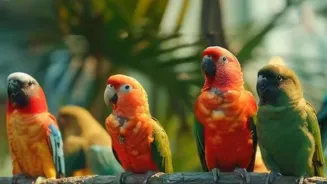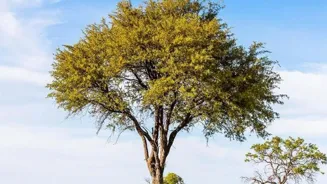Discover 7 Unique Birds That Make India Their Home: A Closer Look. Dive into the vibrant world of Indian avian wonders
India, a land of vibrant cultures and breathtaking landscapes, is also a paradise for
bird lovers. From the snow-capped Himalayas to the tropical backwaters of Kerala, the country boasts an incredible diversity of avian life.
We're taking a closer look at seven unique bird species that are found nowhere else but in India. You don’t have to travel across the globe to experience these breathtaking creatures; they're right here in our own backyard, adding colour and charm to the Indian ecosystem.
India's rich biodiversity makes it a haven for birdwatchers and nature enthusiasts of all levels. We invite you to appreciate the feathered jewels of India and contribute to their protection.
So, whether you're a seasoned birder or just starting to appreciate nature, prepare to be amazed by the beauty and uniqueness of these avian wonders.
Indian Peafowl: symbol of beauty and pride, conservation efforts ongoing
The first on our list is the Indian Peafowl (Pavo cristatus), the national bird of India. These magnificent birds are renowned for their spectacular iridescent blue and green plumage.
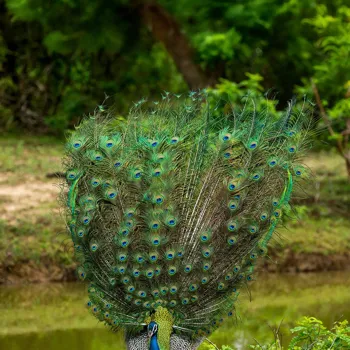
The male peafowl, or peacock, is known for its elaborate tail feathers, which it fans out in a dazzling display during courtship. Peafowls are found throughout the Indian subcontinent, inhabiting forests, grasslands, and even agricultural areas.
They primarily feed on seeds, insects, fruits, and small reptiles. The peafowl is deeply embedded in Indian culture and mythology, symbolizing beauty, grace, and pride. Conservation efforts are focused on protecting their natural habitats and reducing human-wildlife conflict.
Spotting a peacock in full display is an unforgettable experience, reminding us of the natural beauty India has to offer. The vibrant colours and majestic presence of the peacock inspire awe and appreciation for the natural world. Watching them dance during the monsoons is a sight to remember.
Critically endangered Great Indian Bustard faces extinction due to habitat loss and hunting
Next, we have the Great Indian Bustard (Ardeotis nigriceps), a critically endangered bird found primarily in Rajasthan and Gujarat. This large terrestrial bird, often weighing up to 15 kg, is known for its impressive size and stately demeanor.
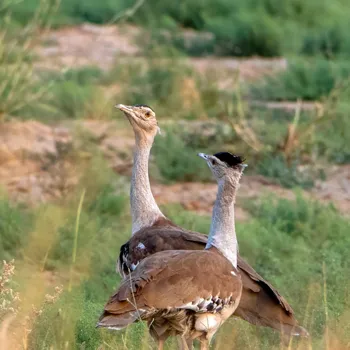
Once widespread across India, its population has dwindled due to habitat loss and hunting. The Great Indian Bustard prefers open grasslands and semi-arid regions, feeding on insects, small reptiles, and seeds.
Conservation initiatives, including protected areas and community-based programs, are underway to save this iconic species from extinction. The majestic appearance and dwindling numbers of the Great Indian Bustard highlights the urgent need for conservation.
Spotting a Great Indian Bustard is a rare privilege, a testament to the importance of preserving India's natural heritage. We should all support the protection of these beautiful birds. It's important to raise awareness about their importance in balancing the food cycle.
Malabar Grey Hornbill: a unique bird in danger due to habitat loss in Western Ghats
Our third unique bird is the Malabar Grey Hornbill (Ocyceros griseus), endemic to the Western Ghats of India. This medium-sized hornbill is characterized by its grey plumage, curved beak, and distinctive casque, a bony growth on top of its beak.
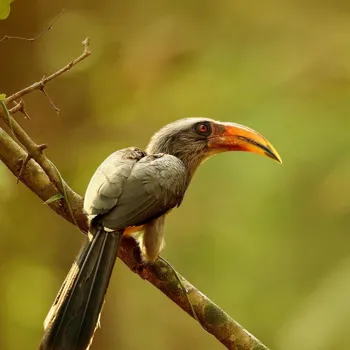
Malabar Grey Hornbills are typically found in moist deciduous forests, where they feed on fruits, insects, and small reptiles. They are known for their loud calls and sociable nature, often seen in pairs or small groups.
Habitat loss due to deforestation poses a significant threat to their survival, emphasizing the need for forest conservation in the Western Ghats.This elegant bird plays an important role in seed dispersal and forest regeneration.
Efforts to protect the Western Ghats ecosystem will directly benefit the Malabar Grey Hornbill and other endemic species. When exploring any place, be mindful of not disturbing the natural cycle.
Endangered Nilgiri Laughingthrush in Tamil Nadu faces habitat threats
The fourth fascinating bird is the Nilgiri Laughingthrush (Montecincla cachinnans), found exclusively in the Nilgiri Hills of Tamil Nadu. This montane bird is known for its distinctive laughing calls and secretive behavior.

Nilgiri Laughingthrushes inhabit dense shola forests, feeding on insects, fruits, and seeds. Their population is threatened by habitat degradation and fragmentation, making them a vulnerable species. Conservation efforts include protecting shola forests and promoting sustainable land use practices.
The unique calls of the Nilgiri Laughingthrush add to the rich soundscape of the Nilgiri Hills. Preserving these forests is essential for the survival of this and other endemic species.
Visiting the Nilgiri hills and hearing this beautiful bird’s “laugh” is an experience that can't be explained in words. Tourists are encouraged to take photos and leave only footprints.
Rediscovery of Jerdon's Courser underscores conservation urgency
The fifth bird is the Jerdon's Courser (Rhinoptilus bitorquatus), a nocturnal bird found in Andhra Pradesh. Presumed extinct for many years, it was rediscovered in 1986. This ground-dwelling bird is known for its cryptic plumage, which helps it blend in with its arid surroundings.
Jerdon's Coursers inhabit sparse scrub forests, feeding on insects and seeds. They are highly endangered due to habitat loss and human disturbance. Conservation initiatives, including protected areas and community-based conservation, are crucial to safeguarding their survival.
The rediscovery of Jerdon's Courser highlights the importance of ongoing biodiversity surveys and conservation efforts. Protecting their habitat is crucial for the survival of this remarkable and elusive bird.
White-bellied Sholakili: endemic bird of Western Ghats, faces habitat threats
Our sixth unique bird is the White-bellied Sholakili (Sholicola albiventris), another endemic species of the southern Western Ghats. Also known as the White-bellied Blue Robin, this small, vibrant bird inhabits the high-altitude shola forests.
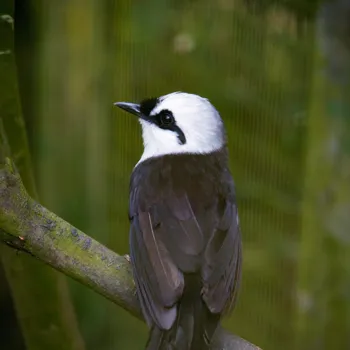
The male is a striking dark blue with a contrasting white belly, while the female is a more subdued brownish colour. They are relatively shy birds, often heard before they are seen, foraging for insects and berries in the undergrowth.
Habitat loss and fragmentation due to agricultural expansion and development pose a significant threat to their population. Conservation efforts focus on protecting and restoring shola forests, crucial habitats for this and other endemic species of the region.
The White-bellied Sholakili is a symbol of the unique biodiversity of the Western Ghats and the importance of preserving these precious ecosystems. Their unique colour is a gem to watch in nature.
Rare Finn's Weaver faces habitat loss, conservation efforts crucial
Finally, we have the Finn's Weaver ( Ploceus megarhynchus), a rare and threatened weaver bird found in the Terai region of northern India. This bird prefers tall grasslands and wetlands, habitats that are increasingly threatened by agriculture and development.
Male Finn's Weavers are brightly coloured, with a yellow head and breast, while females are more subtly patterned. They build intricate woven nests, hanging them from reeds and grasses. Finn's Weavers are particularly vulnerable due to their specific habitat requirements and limited range.
Conservation efforts involve protecting and restoring grassland ecosystems, and working with local communities to promote sustainable land management practices. The sighting of Finn's Weaver is a treat for birdwatchers.
AI Generated Content. Glance/InMobi shall have no liability for the content